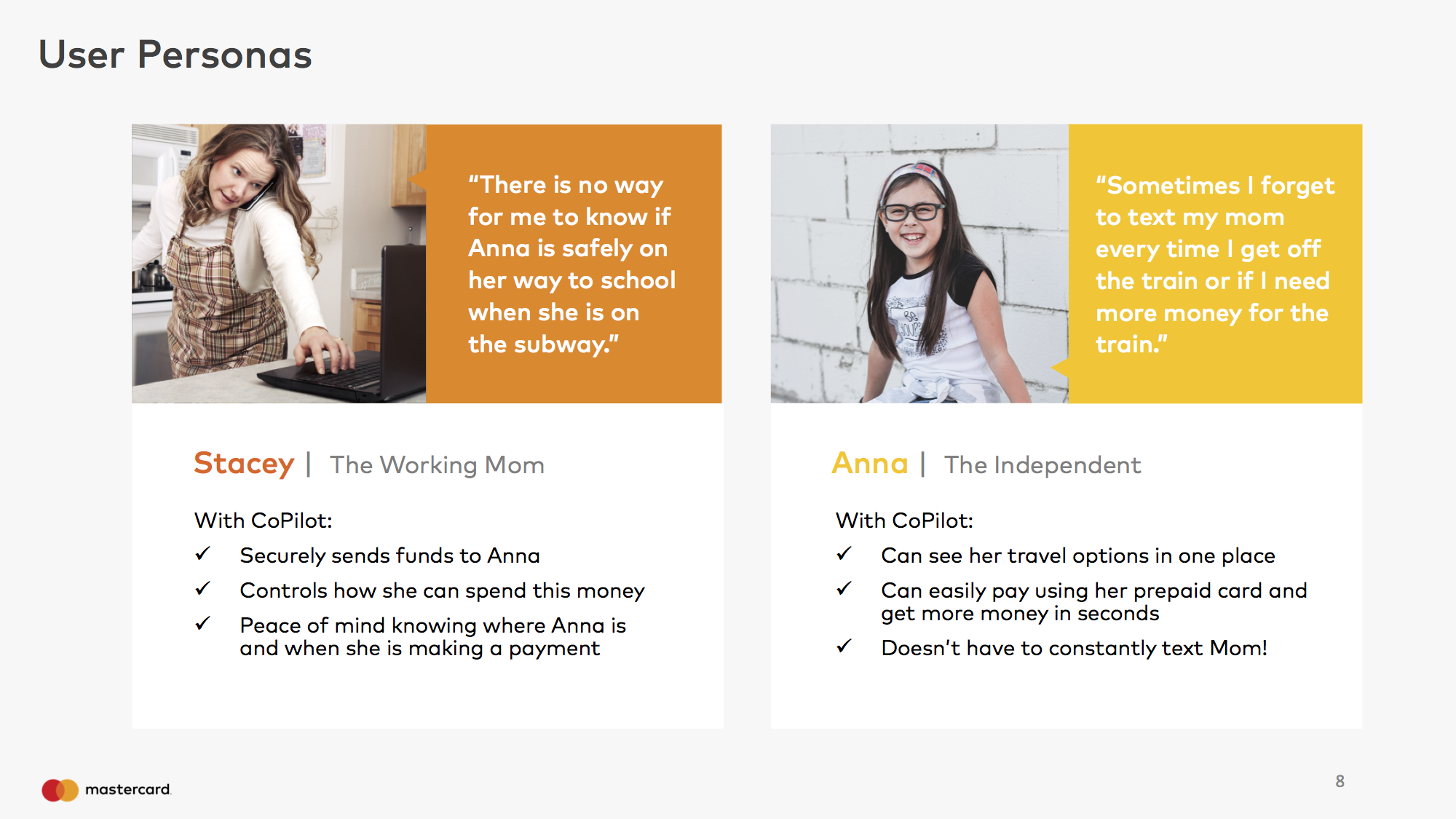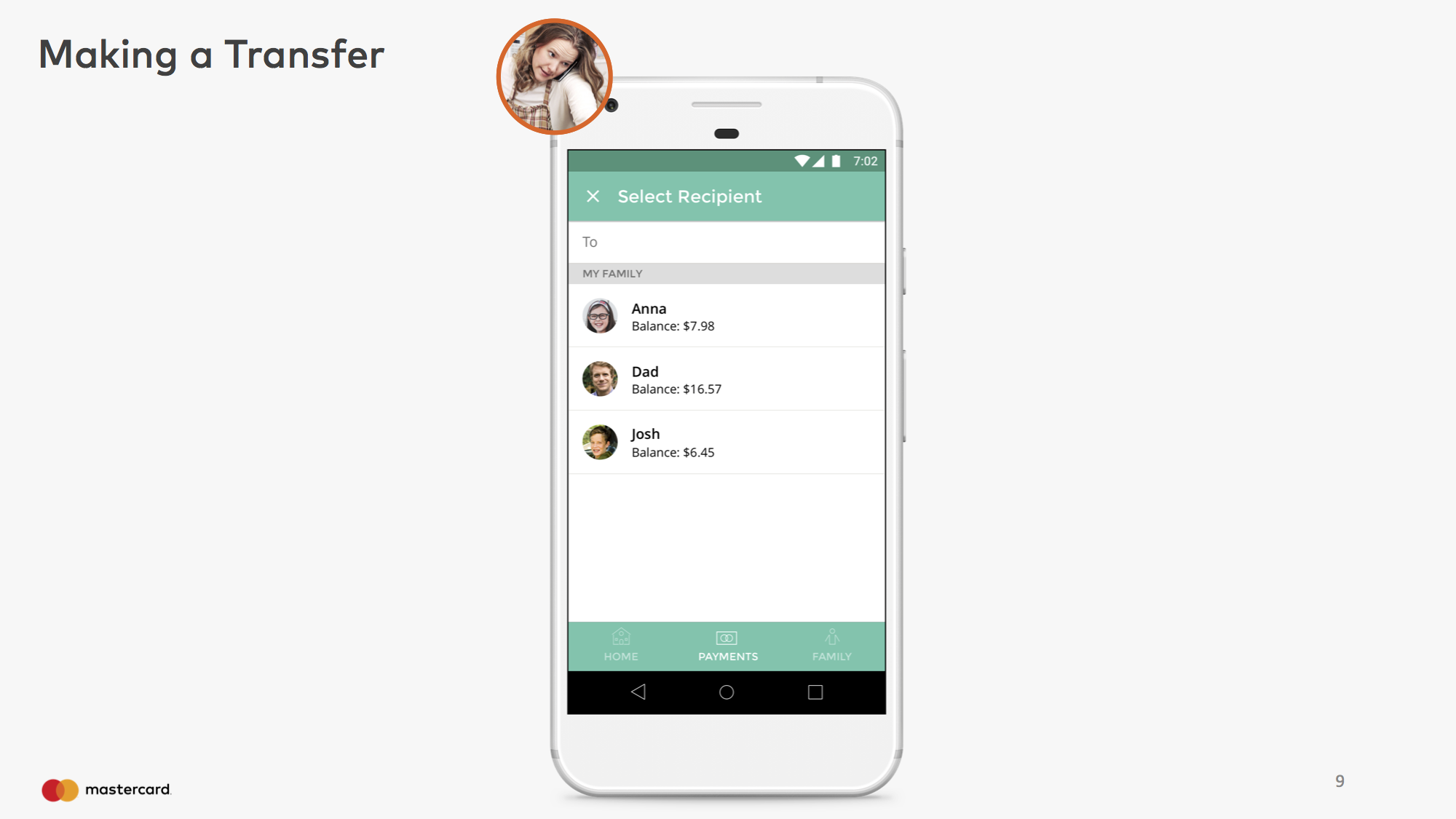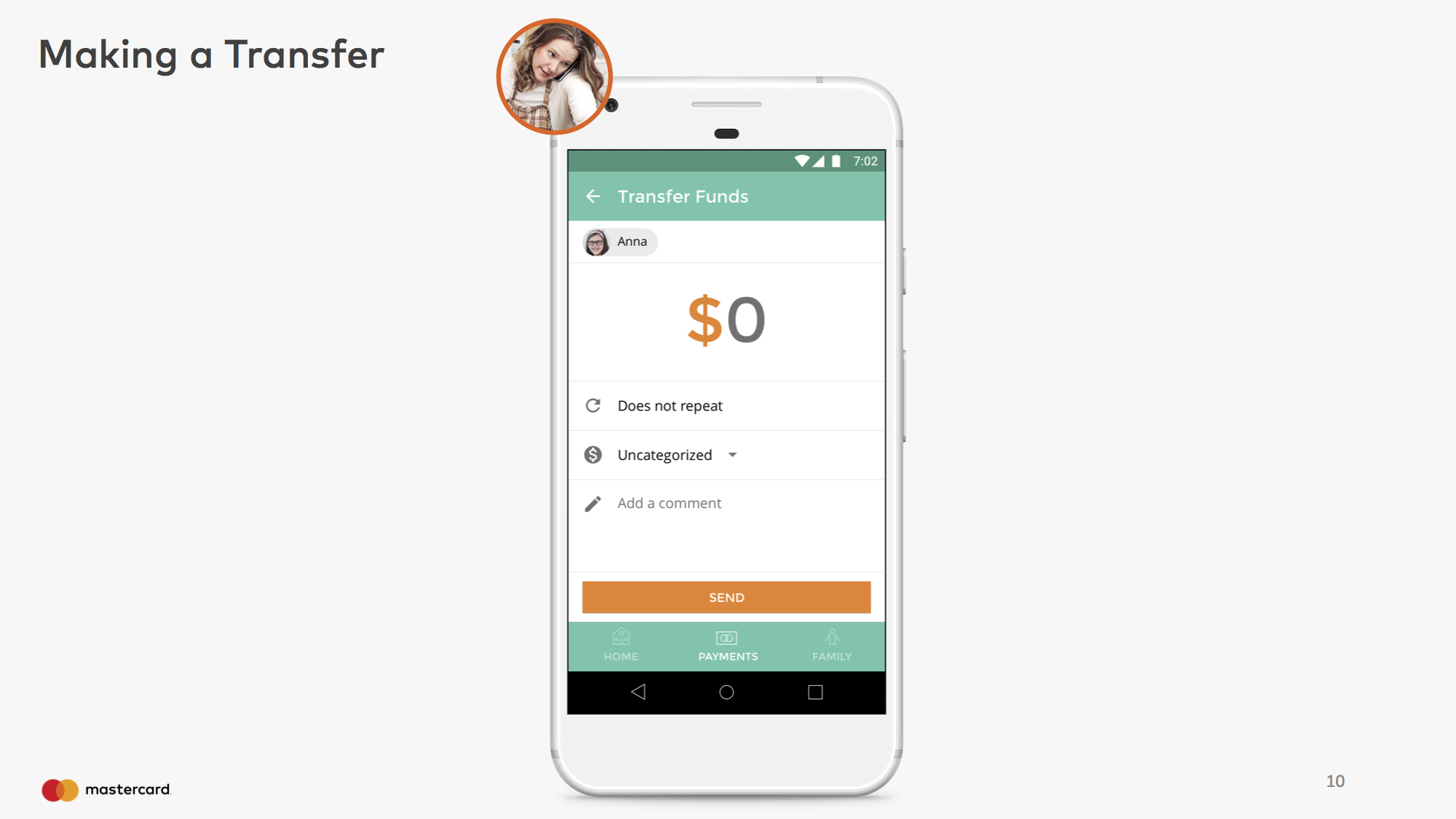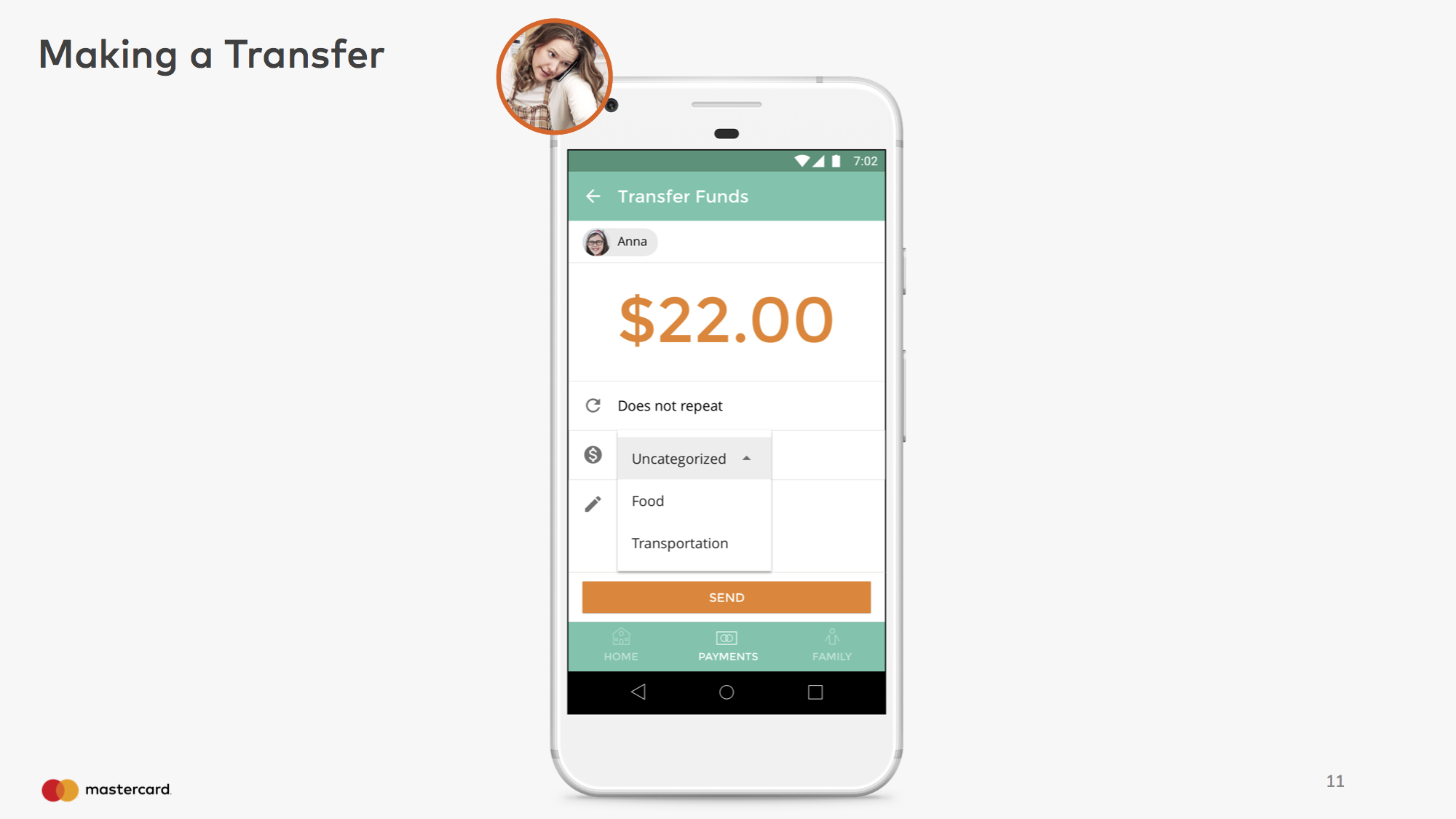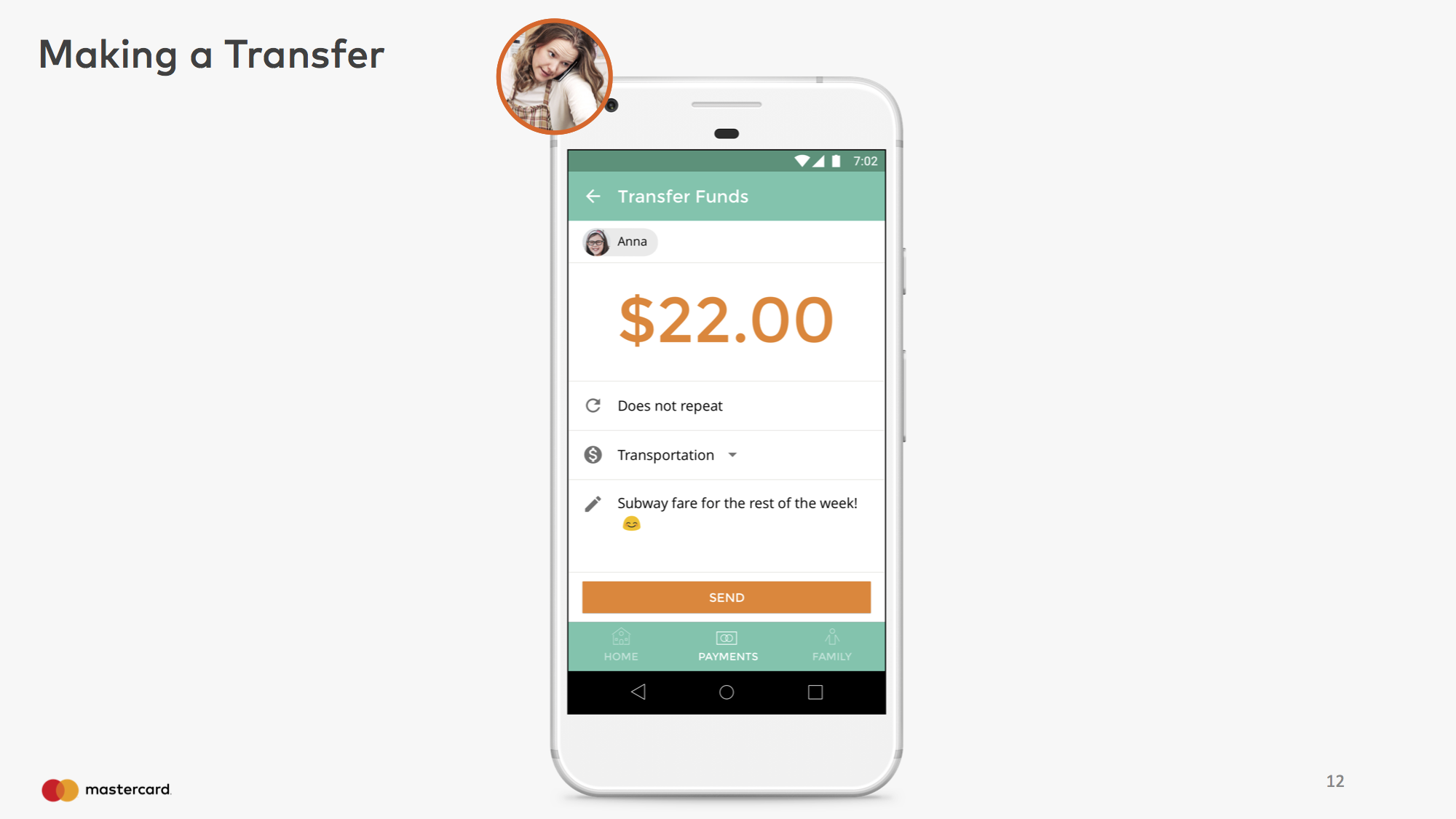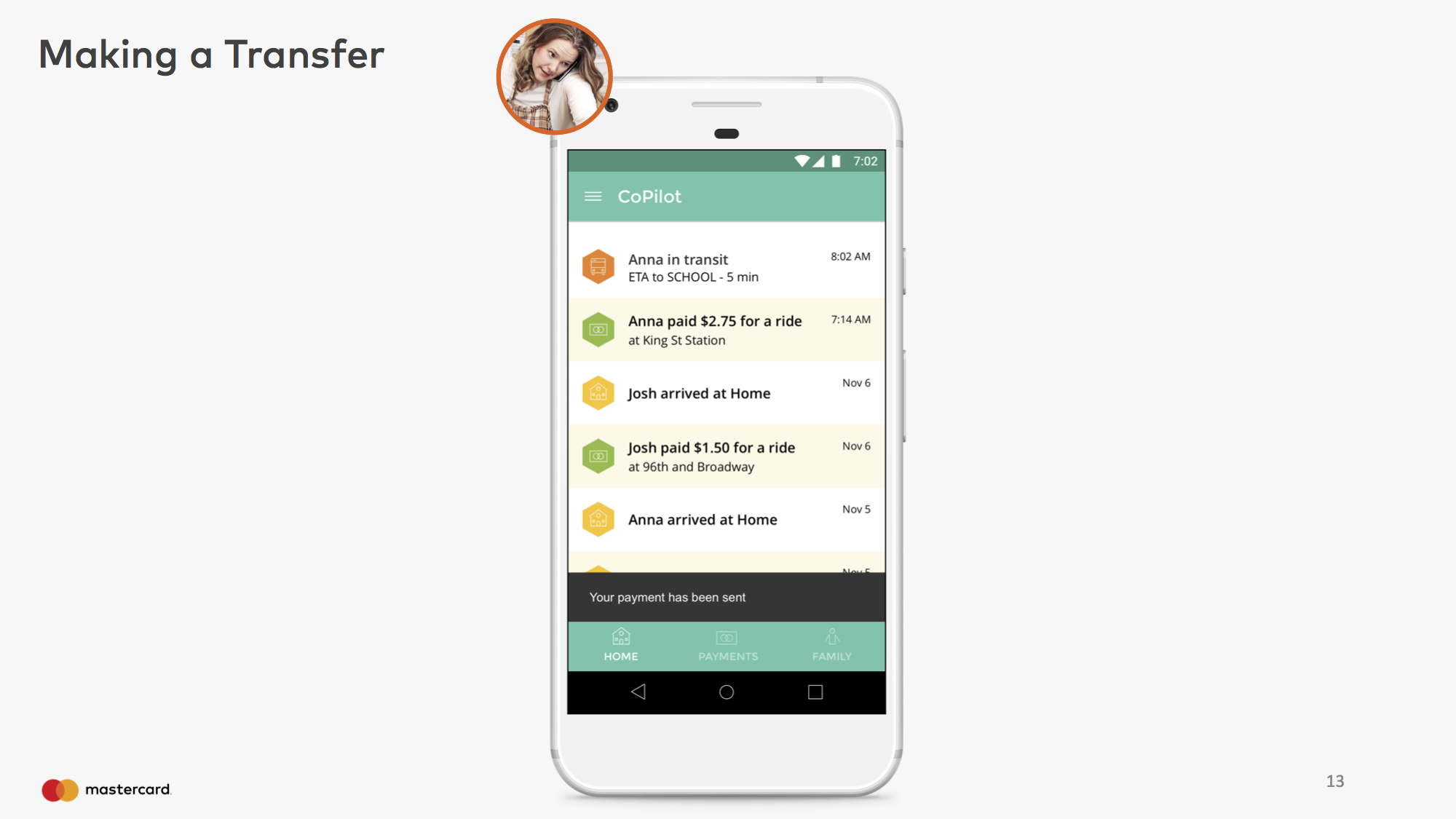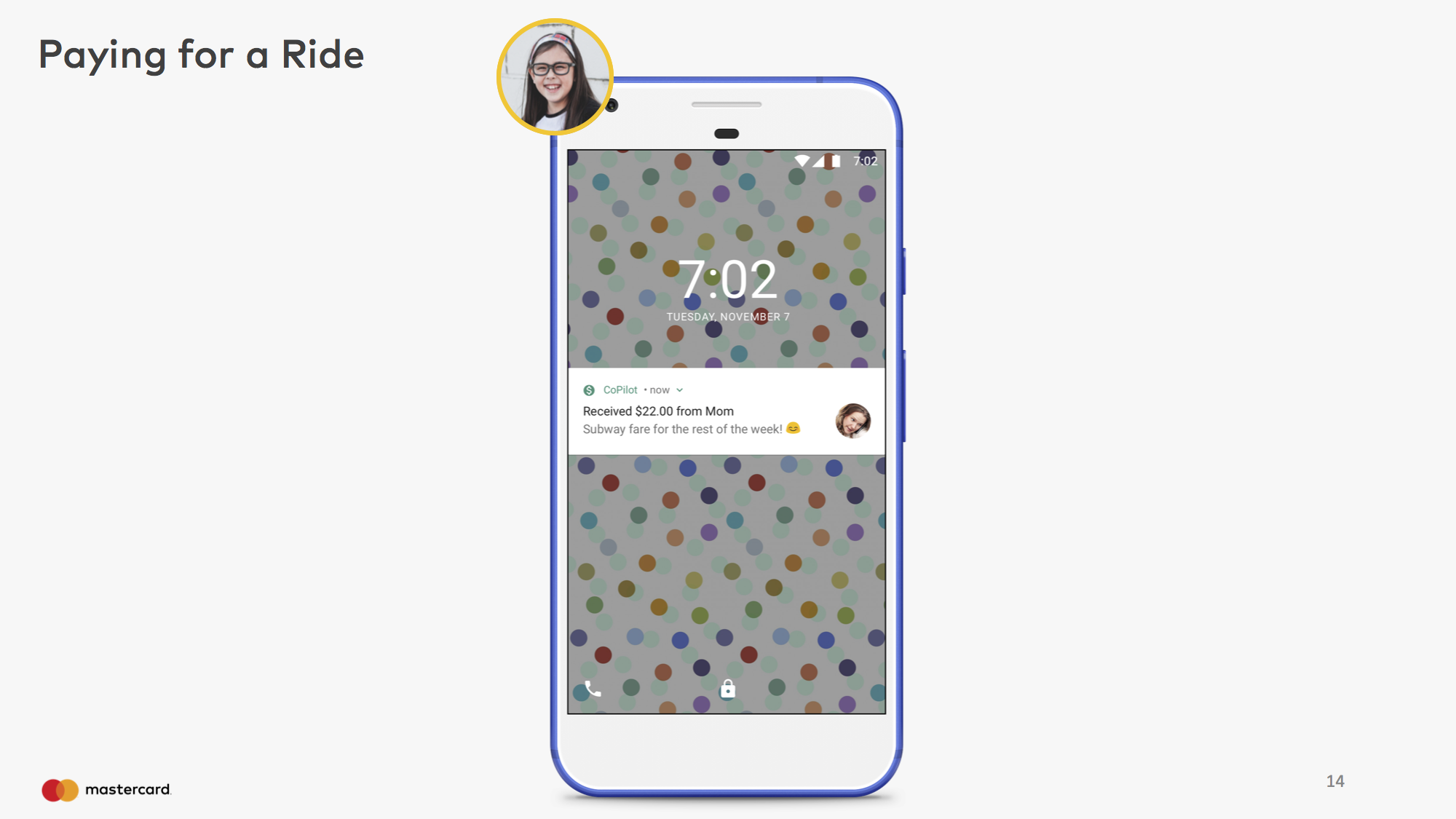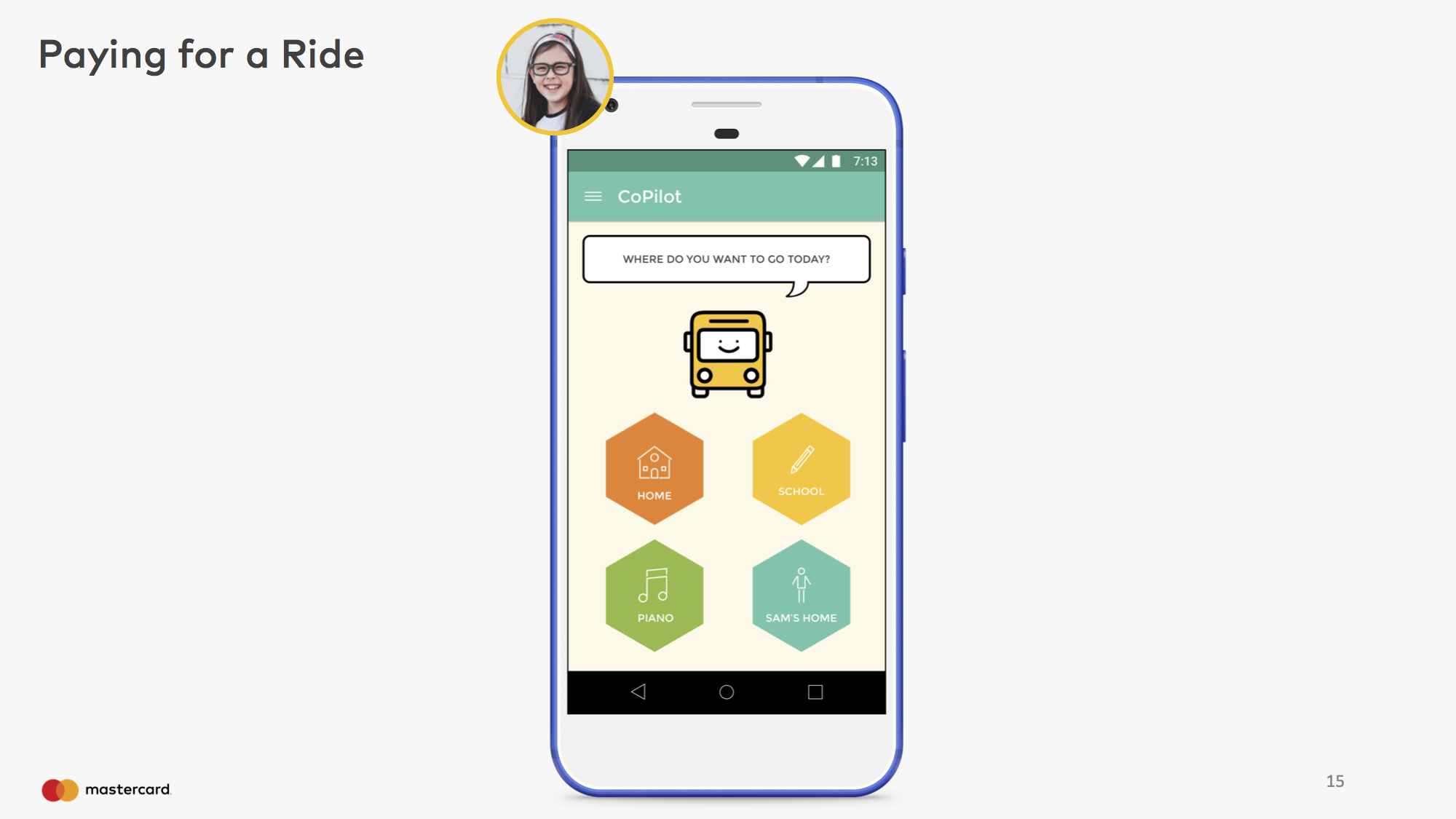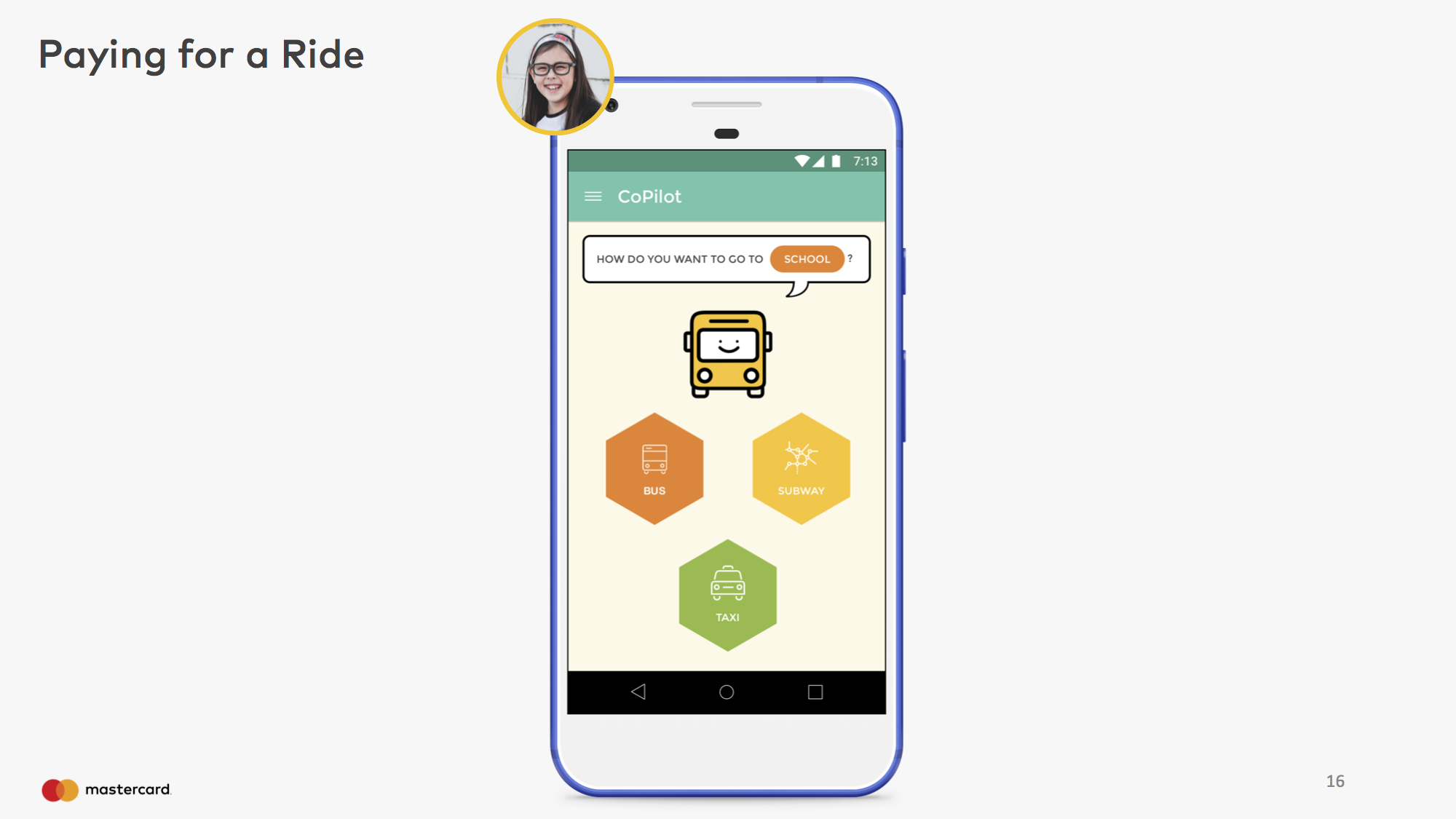Ideabox
Role: UX Designer, User Research, User Testing, Storyboarding, Wireframing, Prototyping, UI Design
A Mastercard hosted innovation challenge, Ideabox is an opportunity within Mastercard to form teams with coworkers to come up with new ideas around a quarterly prompt. In a team of 7, we came up with a digital solution for a safe and easy way for children to use the transit system. Our idea went beyond the initial qualification round and received a stipend to continue efforts in creating a business plan and developing a cohesive user experience.
Research:
The population density of cities are increasing rapidly and public transportation is becoming the preferred method of commute for many families living in urban cities. With the advances in today's society, more and more children are carrying around mobile devices as a safety measure for communicating with their guardians and friends when they are off to commute via public transit without supervision. With a 1.2 billion dollar industry in supplying public transportation to schools within the US, and we saw this as a massive opportunity for Mastercard.
Problem:
There’s a growing number of ways to get around a city, but there is no simple and secure way to pay for all of them in one place. Cash is insecure and often times not accepted as a payment method as transit goes digital.
Solution:
CoPilot is an all-in-one digital transit solution that makes it easier and safer for families to travel and manage funds for transportation in urban cities.
Through integrated technology with Mastercard and other existing partners, CoPilot will put Mastercard in a central role to displace cash while driving our core growth around the globe.
Storyboarding:
In order to better understand how our solution would work, we drew up storyboards to see what kinds of use cases it could be applied for. The storyboarding helped us understand more clearly how the use case could be integrated into certain settings seamlessly and makes sense for the user to adopt.
Sketching out the different use cases allowed us to hone in on a single story that would users could related to the most. We developed user personas for "The Working Mom" and "The Independent" child, living in a city to get to school via public transportation.
Walk Through:
The story begins with 2 personas; a mother and a daughter who use CoPilot for their transportation fund needs. Below are the screens which show Stacey's journey in transferring funds into Anna's account using CoPilot. Stacey is able to view and manage the transit activity of all her children through the app as well for a peace of mind in knowing if her kids have gotten on the train to school.
On Anna's side, she sees that her mother has topped up her train card funds and can now pay for her train ride to school without having to worry about being short on funds. The fund transfer was immediate, so this could have happened at any time during Anna's walk to the train station.
Payment Methods:
We tested out different payment methods that could work on the app. In cities like New York, the turnstiles don't accept tap-and-pay payment methods so an alternative method we mocked up was using QR codes. QR code technology is inexpensive and requires very little changes to existing infrastructure that may already be in place. They also don't require service in order to be read, so subways or trains that exist underground will not have as many problems. Mastercard's QR services along with Masterpass are also big parts of the business that we could integrate into the product to help drive transaction volume.
Business model
There are several different Mastercard APIs available to us that can be used in CoPilot, making the product run almost entirely on our rails. Our network of relationships with various transit authorities and government entities are a great advantage so it is an obvious decision to choose Mastercard as the company to provide this service within the 1.2 billion dollar space.
A lot of research went into the internal workings of Mastercard and how we could leverage the resources and teams we have internally to achieve this product without needing outside vendors, while increasing our network of partnerships with other high profile companies.
Patent Approved:
We filed a patent for our product and was approved by Mastercard's patent team to become actualized. The patent can be found here. Our idea did not get to the final round to become incubated, but we were able to add the solution to the Mastercard API page as an example of ways to bundle multiple Mastercard APIs in creative ways.



